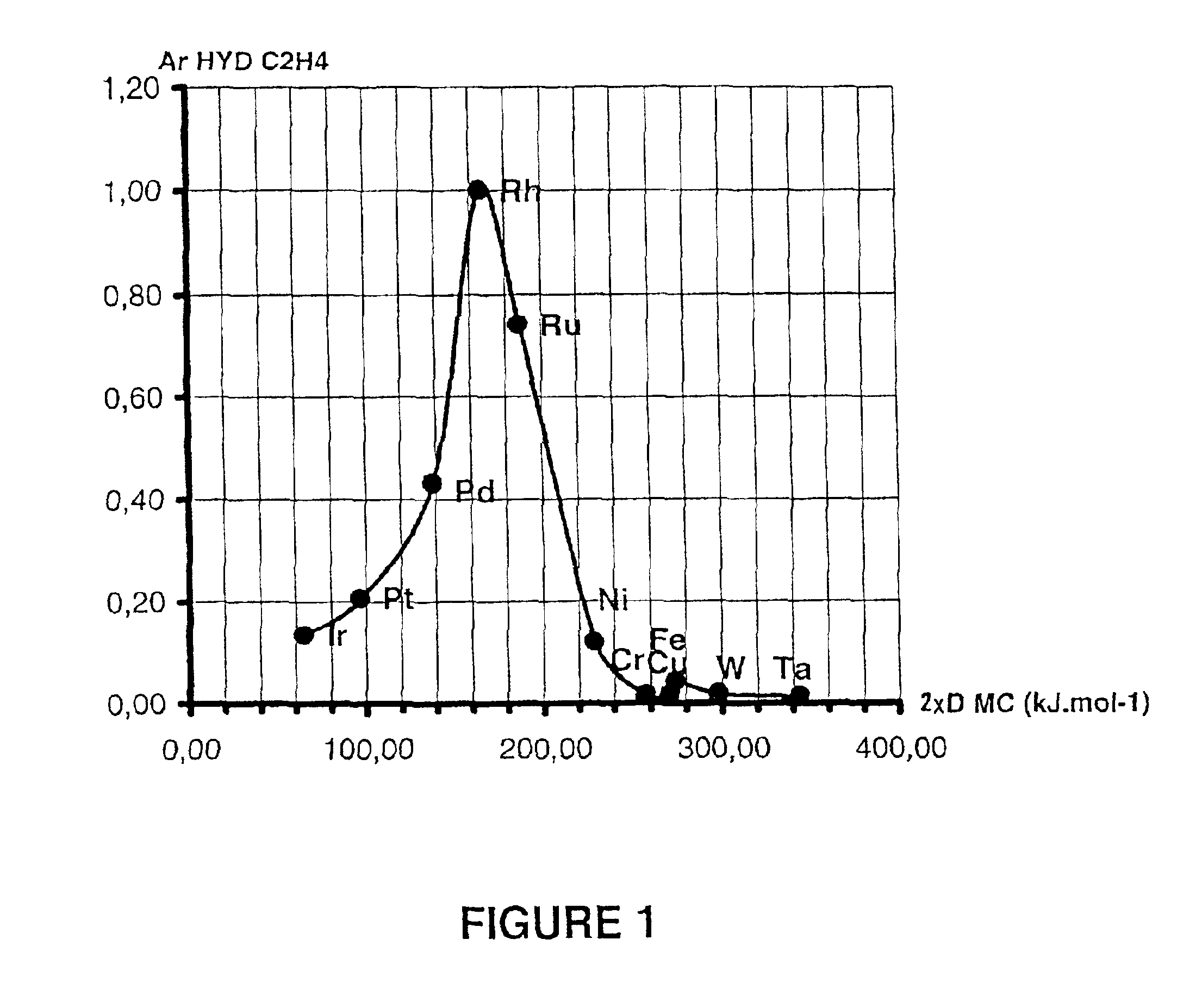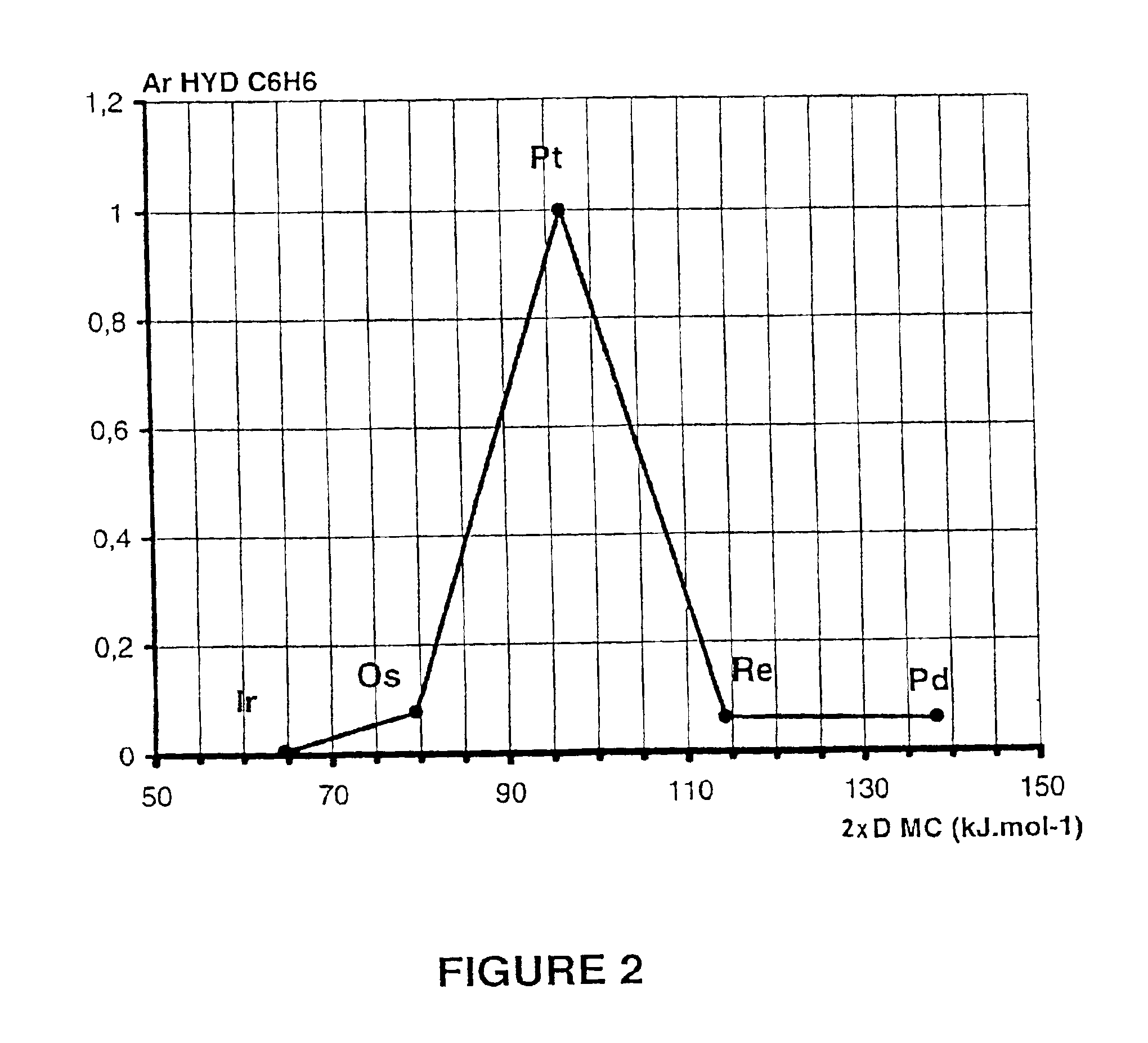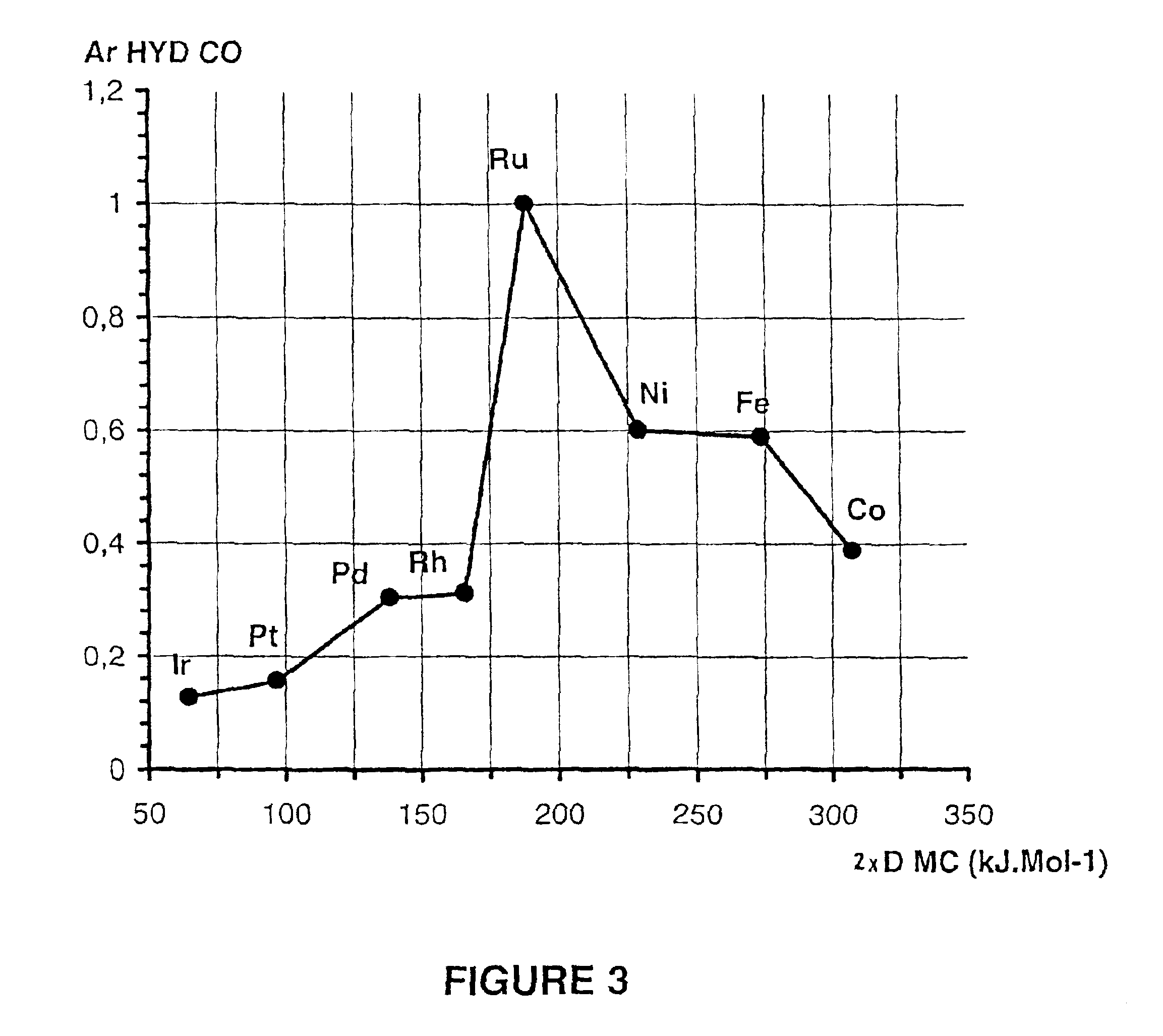Design of new materials whose use produces a chemical bond with a descriptor of said bond
a new material and chemical bond technology, applied in the field of new materials whose, can solve the problems of limited number of practical successes, low success rate of blind exploration of a field of combinations, and risk of not being balanced enough
- Summary
- Abstract
- Description
- Claims
- Application Information
AI Technical Summary
Benefits of technology
Problems solved by technology
Method used
Image
Examples
example 1
Calculation of the Descriptors
In the case of metal carbides, the process according to the invention makes it possible to calculate descriptors D.sub.MC of the metal-carbon bond for the set of transition elements from crystalline characteristics of the corresponding carbides. These characteristics were mainly noted in the data base "Crystmet," in the version distributed by the company Materials Design S.A.R.L. under the MedeA interface, version 1.1.1.4. For the carbides whose characteristics were absent from the Crystmet base, the procedure was performed analogously by adopting the perovskite structure M.sub.4 C, of BaTiO.sub.3 type, which corresponds to the compound for inserting carbon into the center of the cube in the face-centered cubic lattice of the metal and by searching on a case-by-case basis for the optimal cubic mesh, i.e., edge value a of the cubic lattice that corresponds to the minimum of the total electronic energy.
The calculation of the total electronic energy was ca...
example 2
Hydrogenation from Ethylene
Indices R.sub.MC that are used in this example are the relative inherent catalytic activities A.sub.r.sup.hydC2H4 as regards the hydrogenation of ethylene of a series that represents transition elements. These activities have been measured by various authors at 273K and 0.1 MPa, on metallic films (O. Beeck, Modern Phys., 17, 61, 1945 and Disc. Faraday Soc., 8, 118, 1950) or in the state with a silica substrate (G. C. A. Schuit et al., Adv. Catalysis 10, 242, 1958). The two authors essentially found the same results for the two implementations of the active metal.
Table 2 presents these available experimental results and combines them with values of descriptors D.sub.MC, calculated with the process according to the invention and extracted from Table 1. The activities are related to the per-atom activity of rhodium, the most active metal that is known for this reaction, such that A.sub.r.sup.hydC2H4 (Rh)=1.
FIG. 1 is a graphic representation of the results of ...
example 3
Hydrogenation of Benzene
Indices R.sub.MC that are used in this example are relative inherent catalytic activities A.sub.r.sup.hydC6H6 as regards the hydrogenation of benzene. These activities have been measured at 373 K and 0.1 MPa by different authors for a series that is representative of the transition elements (see, for example, French Patent FR 2 072 586, and the book "Catalyse de Contact [Contact Catalysis]," edition updated in English ("Applied Heterogeneous Catalysis") by J. F. LePage et al., p. 294, Technip, Paris, 1987).
Table 3 presents these available experimental results and combines them with the values of descriptors D.sub.MC, calculated with the process according to the invention and extracted from Table 1. The activities are related to the per-atom activity of platinum, the most active metal that is known for this reaction, such that A.sub.r.sup.hydC6H6 (Pt)=1.
In FIG. 2, D.sub.MC is plotted on the abscissa and A.sub.r.sup.hydC6H6 is plotted on the ordinate, so as to ...
PUM
| Property | Measurement | Unit |
|---|---|---|
| distances | aaaaa | aaaaa |
| distances | aaaaa | aaaaa |
| temperature | aaaaa | aaaaa |
Abstract
Description
Claims
Application Information
 Login to View More
Login to View More - R&D
- Intellectual Property
- Life Sciences
- Materials
- Tech Scout
- Unparalleled Data Quality
- Higher Quality Content
- 60% Fewer Hallucinations
Browse by: Latest US Patents, China's latest patents, Technical Efficacy Thesaurus, Application Domain, Technology Topic, Popular Technical Reports.
© 2025 PatSnap. All rights reserved.Legal|Privacy policy|Modern Slavery Act Transparency Statement|Sitemap|About US| Contact US: help@patsnap.com



